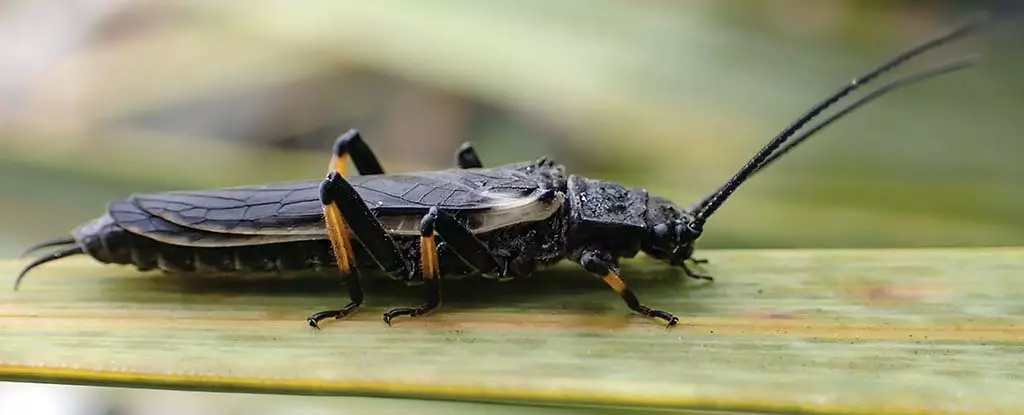New Zealand is home to some of the most fascinating examples of evolutionary biology, with its diverse species often exhibiting remarkable adaptations. One such case, that of the long-tailed stonefly (Zelandoperla), showcases how human-induced environmental changes can drive rapid evolution. Once a clever mimic of the toxic Austroperla, Zelandoperla has now altered its coloration due to significant habitat loss. This transformation represents a striking adaptation narrative, emphasizing the resilience and dynamic nature of species in the face of human impacts.
The mimicry strategy adopted by Zelandoperla was initially a brilliant evolutionary tactic, allowing it to avoid predation from birds by closely resembling the toxic Austroperla. The latter produces cyanide and maintains a niche in forest streams where its primary food source, leaves, and woody debris, are abundant. This camouflage worked effectively for Zelandoperla, as the presence of Austroperla meant predators were conditioned to avoid both the toxic stonefly and its non-toxic counterpart.
However, in deforested areas where Austroperla populations have dwindled, the necessity for such mimicry has all but vanished. This change has prompted a fascinating evolutionary response, with Zelandoperla changing its coloration to darker shades, abandoning its previous mimicry. This finding not only underlines the influence of environmental factors but also sheds light on the adaptability of species when faced with abrupt habitat changes. Jon Waters, a zoologist involved in the research, notes this essential shift, pointing out that the absence of its toxic counterpart led to a reevaluation of survival strategies among these stoneflies.
The research conducted by scientists at the University of Otago employed a multifaceted approach to gauge the insect’s adaptive responses to changing environments. This included field observations, experimental predation studies, and genetic analysis. Interestingly, predation experiments revealed a stark contrast in survival rates between the differently colored Zelandoperla specimens. In forested regions, predation was notably directed toward the non-mimicking lighter-colored stoneflies, affirming the effectiveness of their camouflage when Austroperla was present.
In deforested environments, however, predation pressure decreased significantly, leading to a unique behavioral response from local birds. These predators exhibited a preference for the darker-hued Zelandoperla, which suggests that the lighter coloration became less of a liability in the absence of the toxic model. This result raises important questions about ecological interactions and predator-prey dynamics during periods of rapid environmental alteration.
The widespread deforestation that has occurred in Southern New Zealand since the early 1800s has led to drastic changes in many ecosystems. While human activities have caused disruptions in ecological relationships that have persisted for eons, the ability of certain species, like Zelandoperla, to adapt presents an optimistic outlook for biodiversity. Graham McCulloch, another zoologist involved in the study, discusses how independent populations across various deforested regions also exhibit similar adaptive colorations, emphasizing that evolution, in this context, can follow predictable patterns.
Despite the alarming rate at which human interventions disrupt ecosystems, the findings indicate a degree of resilience among certain species. The adaptive shifts seen in Zelandoperla highlight the potential for rapid evolutionary changes in response to anthropogenic pressures. This not only reinforces the importance of understanding how ecosystems respond to human influence but also emphasizes the need for proactive conservation efforts that protect the remaining habitats.
The case of Zelandoperla is a vivid reminder of the interplay between species and their environments. While the long-tailed stonefly has shown remarkable adaptability, many other species may not possess the same resilience. This research underscores not just the impacts of deforestation on biodiversity but also the overarching need for conservation strategies that safeguard remaining natural habitats. The ability of species to adapt to their surroundings is inherently linked to the health of their ecosystems; hence, protecting those ecosystems is paramount for both the species within them and the broader environmental integrity of our planet.


Leave a Reply